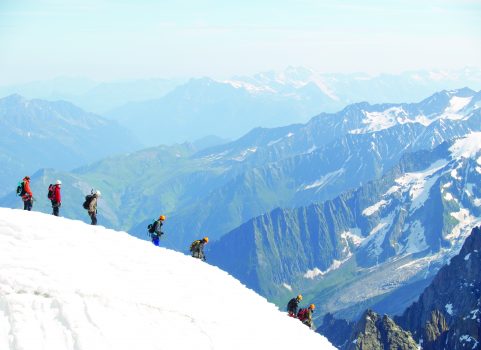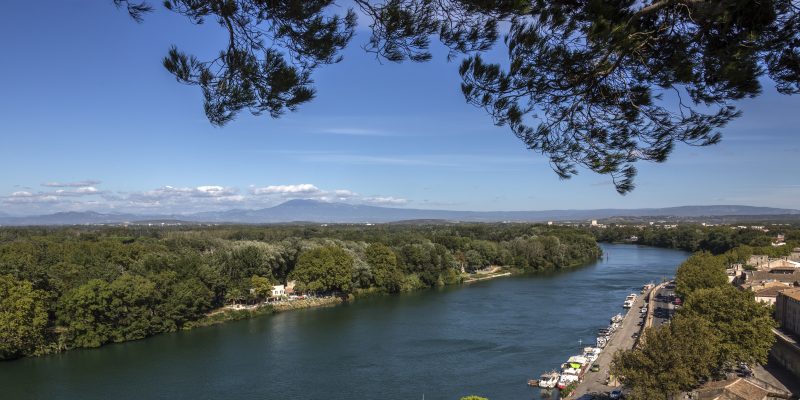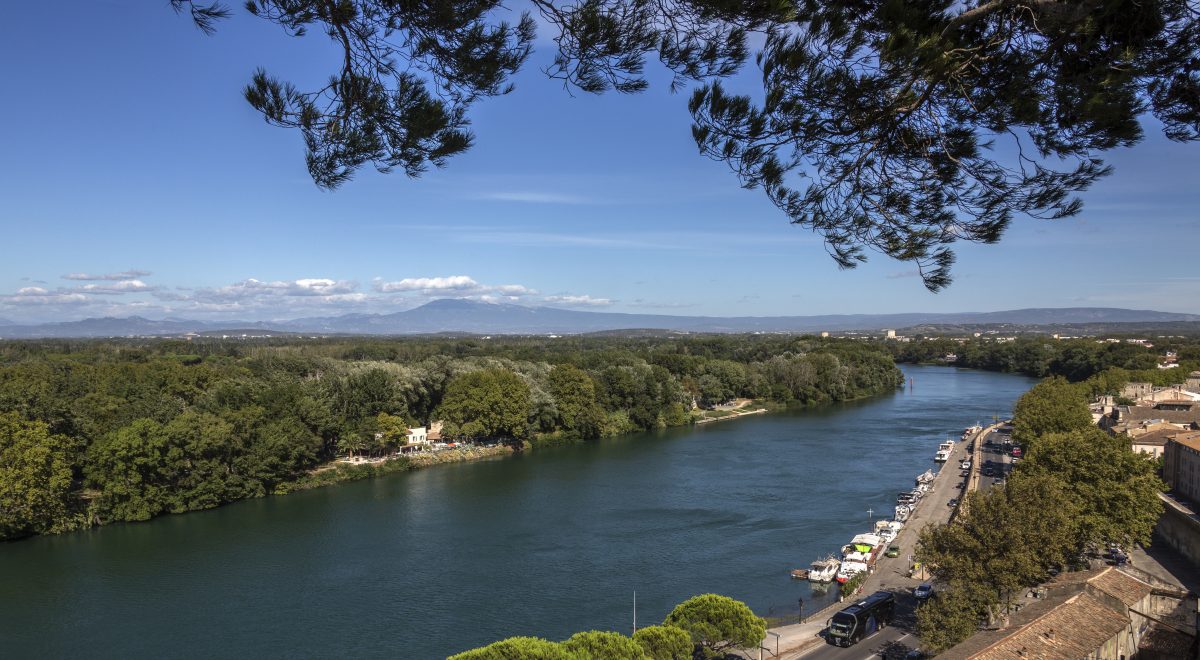By Josephine Matyas
On a smooth, grey bike path I pedaled slowly, drinking in the view over Lac Leman, a crescent-shaped body of water shared by Switzerland and France. In the space of an hour’s ride, I enjoyed a scoop of decadent ice cream, counted the fountains, stopped to recharge with water at an outdoor café and indulged in a little people watching. I’d decided that an unhurried bike ride was the perfect launch to my simple task: exploring water through the Rhône-Alpes region, a part of the French countryside blanketed with lakes and rivers, springs and canals – water that is drinkable, flowing and frozen. This is where I came to have water whisper to me.
This part of the country gets its name from the Rhône River and the towering French Alps. In between the peaks are valleys and a patchwork of small villages and farms with a culinary pedigree that produces one quarter of the country’s 400 varieties of cheese. There are white wines, pressed from the Chasselas grapes and poured when indulging in fresh caught seafood from Lac Leman or mountain specialties like fondue and raclette from the Alps.
Here, water touches everything.
In Évian-les-Bains, the water surges upward
In Évian-les-Bains, the beverage of choice is . . . Evian, the water found in stylish bistros and restaurants worldwide. The locals insist that Evian is so balanced you can drink as much as you want. The water flows through the town’s public taps, the result of rain and meltwater that began its journey in the mountains, filtered for years through glacial sand and clay before reaching the local aquifer. In the village, premium evian shoots from the springs and people come to fill their jugs for free. It also feeds the pools and hot springs of the town’s popular thermal centres.
“Évian is definitely the water city,” said guide Evelyne Hurtaud. The small town commands a scenic spot with the shores of Lac Leman to the north the snow-capped peaks of the French Alps to the south. “All year long the water is at 11-degrees Celsius,” she continued. “It is rainwater that falls onto the hills and naturally filters through the stone. After 20 years of filtering it arrives at the two open spring heads in the village.”
What flows non-stop from La Source Cachat, one of the springs in the centre of town, is unadulterated evian, the same water sold with lavish price tags at shops and restaurants worldwide. In the 19th century when the spring water was touted with medicinal properties, the Belle Époque resort town of Évian-les-Bains quickly grew around the water source, offering treatments based on the properties of the pure spring water. Visitors to the thermal spas sip pure evian from a glass, swim in the pools, soak in the baths, relax in cafes and stroll along the waterfront pathway.
According to Evelyne the water that flowed from the spout was very pure and renowned for treating kidney problems. “In the 1830s the first bottling factory was established – although the amount they are allowed to use is strictly controlled – and by the 1860s an agreement was made to also use the waters for therapeutic purposes. Until the 1950s, water from the spring was sold only at the chemists. Since then it has been sold everywhere and recognized as water that is good for health.”
Évian also makes the perfect base to explore small villages along the lakefront. Staying with my water theme, I hopped aboard one of the passenger ferries for a 90-minute journey between Évian and the medieval village of Yvoire. This small village announces itself with an imposing, waterside stone castle that has been home to counts, countesses and the family d’Yvoire for 350 years. Day visitors walk among the flower and hedge labyrinth of Yvoire’s Five Senses Garden, explore shops along the narrow, cobblestone laneways, or linger on a patio while enjoying a glass of Le Jacquère, an elegant vintage and one of the Savoie region’s most renowned wines.

The wild, ice-capped peaks of Chamonix
The Rhône-Alpes is also a landscape of water frozen in time in the country’s largest glacier and Mont Blanc, the Alps tallest mountain. In less than two hours I drove from an elegant lakeside town awash with spas and thermal springs to a landscape of untamed, ice-capped peaks. Using the mountain resort town of Chamonix as a base, I found local specialties to warm me up at Restaurant La Calèche. The family-run, mountain chalet-style restaurant is known for its regional specialties like Tartiflette, Savoy cheese fondue and raclette.
Chamonix is a resort town that enjoys peak seasons both summer (for hiking) and winter (for skiing). One of the most sought-after excursions is the whisper-quiet cable car to the Aiguille du Midi summit, a 20-minute trip from the village to the terraces at a dizzying 3842 metres. Feeling lightheaded comes with the elevation. It’s a popular launching point for experienced mountaineers who were strapping on their crampons and testing their safety ropes before stepping onto snow-packed trails. Most non-climbers make the cable car trip for the heart-stirring views of the French, Swiss and Italian Alps.
Chamonix is also the starting point for a trip by cog railway to Montenvers and an overview of the sweeping Mer de Glace – the “Sea of Ice” – at seven kilometres long and 200 metres deep, the largest glacier in France. The sharp and jagged peaks of the surrounding Les Drus and Les Grandes Jorasses give away their relative youth – wind and water have not yet softened their craggy profile.
People come to Montenvers for the valley glacier; just steps from the cog rail station was the Glaciorium exhibit, dedicated to the science of glaciers.
“All of the world’s glaciers move under the weight of their own ice,” explained a scientist manning the exhibit. “If these climate cycles continue, the Mer de Glace will recede four to five kilometres over the next 200 years. This would take it back to its minimal state before the last glaciation 125,000 years ago – the valley would have no ice, just vegetation.”
My short journey to explore water found a sweet finale at this blue ice, chapel of nature. I carefully walked the 430 staircase steps down and into the ice grotto bored into the living glacier. I could not drink from this source, but I know I heard the frozen water whisper to me.

